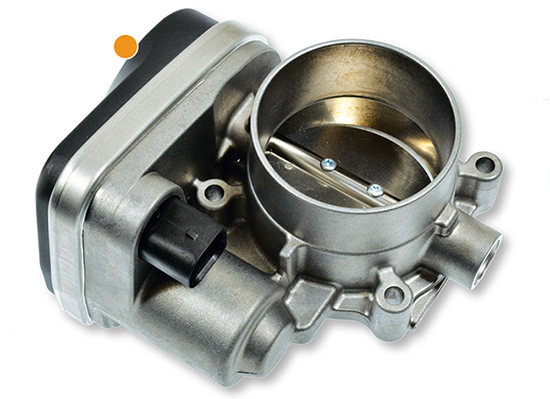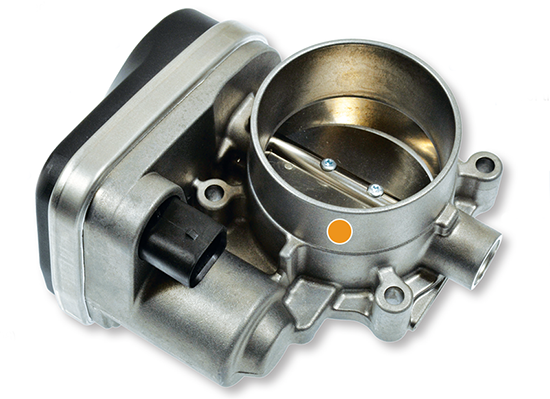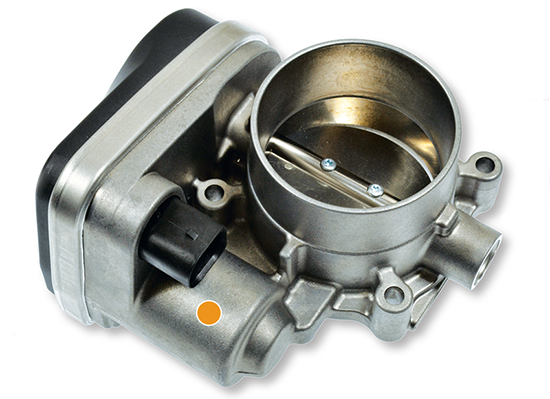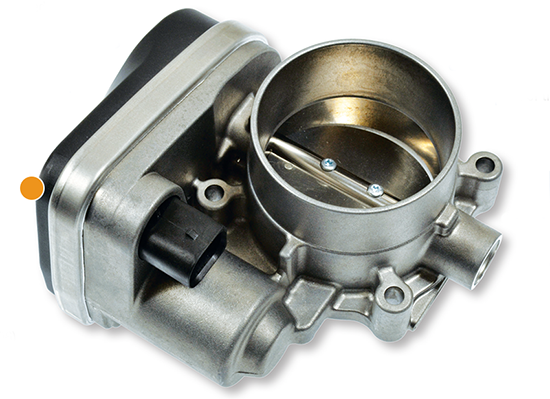Electronic Throttle Body Assembly
To minimize relearn issues, we calibrate the output voltages of our electronic throttle body assembly to match the OE output. Additionally, we subject our assemblies to extensive testing, including:
- 100% testing for correct limp home airflow and proper output voltage versus throttle plate angle
- 100% testing for motor, throttle plate & sensor response times
- 100% testing for air flow at closed and other critical throttle angles
- 100% testing for any air leakage through ETB assembly
- Dimensional verifications throughout production and final testing
-

Magnet molded in high-performance polymer to ensure consistent location and low friction with bearing surfaces
-

Undergoes extensive testing to ensure quality and reliability out of box
-

New, never remanufactured, which maximizes performance and extends service life
-

Custom elastomeric seal protects sensor from environmental underhood elements such as dust, vapor, and liquids
A Closer Look at Our Premium Electronic Throttle Body Components
Housing
Our housing is made of corrosion resistant aluminum and CNC machined to a surface finish of 0.4 microns. Plus, we use Computational Fluid Dynamic (CFD) software to verify the velocity, mass air flow, and pressure losses through the electronic throttle body.
Gear Train
Designed and simulated using sophisticated gear design software and precision-molded in the U.S.A. Our double reduction gear train uses powder metal and plastic materials to prevent gears from becoming overstressed.
Throttle Plate Shaft
Our stainless-steel throttle plate shaft is precision machined and centerless ground to ensure proper alignment of throttle plate in throttle bore and low friction when used with precision needle roller bearings.
Throttle Plate
Our brass and aluminum throttle plates are CNC machined with tolerance less than 0.001 inches.
Bearings
We double seal both our deep grooved ball bearings and drawn cup needle roller bearings to control the amount of air leakage from the bearings into the intake. Plus, our bearings are designed to operate in the housing between -40˚C and 140˚C.
Motor
Our motors are rated for exceptional life in temperatures ranging from -40˚C to 120˚C. Plus, our motor’s integrated ball bearing helps minimize cogging torque and our dynamometer testing ensures OE-matching performance.
Diagnostic and Replacement Tips
This video showcases helpful tips to consider when diagnosing and replacing an Electronic Throttle Body.
